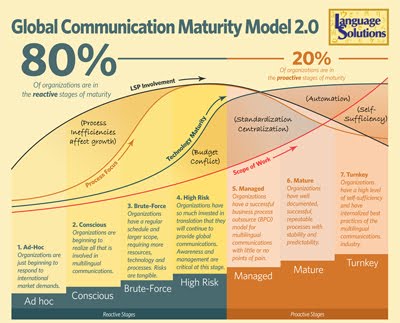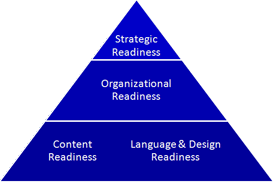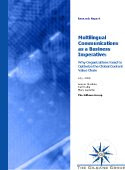There are three customer requirements in the Kano model:
- Revealed (Performance) - requirements in proportion to their absence or presence in the product or service
- Expected (Must Be) - basic requirements that customers often fail to mention unless they are not fulfilled. Satisfaction is often not recognized by customers but dissatisfaction is very much recognized.
- Exciting (Delighters) - the holy grail that we aim with each contact! These are the requirements that go beyond a customer's expectations.
Each customized action plan seeks involvement at the client's decision making process for a translation project. For instance, if you have a sales force that is scoping a translation process and need to set realistic expectations, we need to make sure that our action plan is to support the sales process wherever possible.
Being involved in the decision making process helps us to understand the client specific requirements. It also provides an opportunity to bring in our perspective to set realistic expectations where it will have the most meaningful impact. Our VoC process also confirms that it is much more difficult for clients to address processes at the request stage since the project needs have already mostly been defined by then.
At the request level, it is important to be able to meet the current needs of the client. Therefore, we also look at how current needs impact our workflow and where we can improve. We build relationships with our clients to understand and manage ongoing needs as much as possible so that we can plan ahead.
In our linguistic team selection, we make sure that there is enough flexibility to meet timeframes. While we choose our linguists based on various quality metrics, we also continue to train our linguists in the various technologies that we work in to ensure consistency and quality. This training helps us to provide the most qualified linguist who are capable of working efficiently using our technology.
A client based action plan helps us to support and influence the process where it makes the most impact. Whether this is at our internal process to provide enough flexibility or to help the client make decisions at the decision making process, we manage these needs throughout the value chain. The goal is to be prepared as much as possible to avoid any bottlenecks that could affect fulfilling the client's needs and this started with understanding Voice of the Customer.
We continue to use the Voice of the Customer and the Baldrige's systems approach to address individual needs from a holistic perspective. We listen both to client needs, vendor needs and concerns which have enabled us to provide the highest quality work at the right time.











